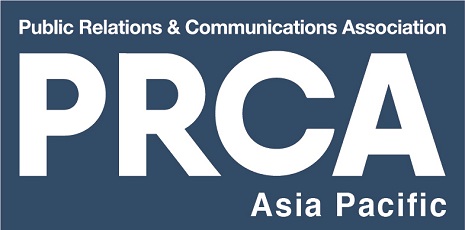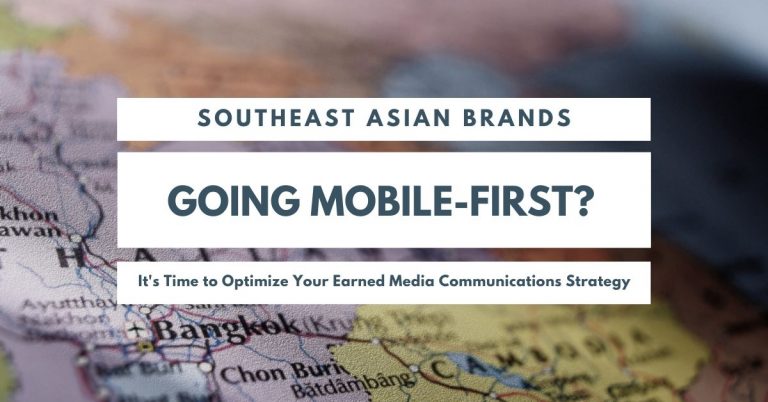Lars Voedisch MPRCA, Managing Director, PRecious Communications
A mobile-first strategy for brands in Southeast Asia should spell out better marketing penetration, far more personalized content and insightful engagement with consumers, thus enhancing its earned media presence.
The smartphone is ubiquitous in its influence, with users consuming news and entertainment with equal vigour. The smartphone screen is now everyone’s “window to the world,” and if you’re a brand that isn’t present there, you’re losing too much ground already. For any brand that wants to — rather, needs to — effectively reach its consumer base, the digital world is your oyster, especially for brands in Southeast Asia. The mobile screen is your best asset in this endeavour to get a share of the earned media pie.
Southeast Asia is one of the most engaged regions in the world with 129% mobile penetration, way above the global average of 115%, according to an early 2019 report. On mobile, most users order food, buy clothing and lifestyle products, watch movies and television series, and keep up with the daily news. Then there are the social platforms — Facebook, Instagram, LinkedIn, Twitter, TikTok and more. There were 5.14 million internet users in Singapore alone as of January 2020, with 4.6 million of them on social media. With over 360 million users in Southeast Asia as of 2019, the market in this region is immensely fertile.
Mobile-First Explained
Firstly, there is much more to being mobile-first than just ensuring your website is mobile responsive or spending big on ad buys. Your entire communication campaign should have one goal: to ensure that your brand has a presence on every mobile screen and ideally appears there organically. It’s time to adapt your marketing strategies to fit into this window to the world.
March 2020 data suggests that Facebook has a massive market share of 62.5% in Singapore, with Twitter at 19.5% and Instagram with only 5.4%, below Pinterest at 7.5%. However, if you’re a lifestyle brand, you will likely get a better bang for your buck pushing great content out on Instagram than you would get from Twitter or even Pinterest. Positioning here is important.
Different Mobile Platforms, Different Strategies
If the online space seems crowded to you, you’re right. It indeed is, but this should not be a deterrent. The biggest advantage of the online space is that the different platforms allow you to take a unique and varied approach to information dissemination. Instagram’s story and search algorithms work quite differently from Snapchat or TikTok. Reverse-engineer your communications strategy to fit Instagram. Do the same for LinkedIn and every other platform.
Enhancing earned media with a mobile-first strategy in Southeast Asia results in better marketing penetration and insightful consumer engagement.
The Need For Bespoke Content
The biggest facet of a mobile-first strategy is personalized and engaging content. You’ve heard that already. But what exactly does this mean? Once you’ve understood your consumer base and you’ve set up your marketing platforms and a well-designed website, you’ll need to figure out how to target them with great organic content that can be shared across all mediums.
You first need to align your content with your platforms. Understand the need, and create content accordingly. What works for Facebook may not necessarily work for Instagram. Use hashtags to ensure better visibility. Again, the key here is to undertake keyword and hashtag research in order to push for viral content. Most importantly, ensure that you maximize the personality of the brand as the endearing factor for the customer.
This needs to be short, simple and to the point, yet colourful enough to warrant a purchase or at least more in-depth research into your brand. What digital gives you, more than any other platform, is the ability to combine the powers of different traditional mediums — print, audio and video — into a consolidated engagement strategy, which also leverages remarketing strategies and automation to create far better brand recall than most.
Meet ‘Dark Social’
There’s a new buzzword in the making: dark social. This refers to social apps like WhatsApp, Facebook Messenger, Telegram, Signal, WeChat, etc. A lot of sharing now takes place here, where you may not really be able to track engagement, but it’s a segment worth considering. When you create content that resonates with consumers, they are more likely to share it with friends or peers who think alike. This may happen in public on Facebook or Twitter, but also on the dark social networks.
To do that, you need to grab their attention from the first second. Keep it short, and ensure that it is funny and/or entertaining. Make it so interesting, fun or useful that your customer deems it worthy to be shared. Platforms like TikTok feed into this “cool” shareable content factor. But that doesn’t mean you won’t get results from a LinkedIn post or a tweet. If the content is extremely relatable and humanized, it should work regardless of the platform it is posted on.
Bottom line: Create shareable and organic content. Simple!
Mobile Is Everything And Everywhere
Look at it this way: Millions of people wake up to their phone alarm and check messages and emails. They then surf social media and the internet during breakfast and on the ride to work (which can also be booked on mobile). At the office, there’s a combination of work and the occasional checking of social media timelines, like Facebook, Instagram and LinkedIn. Lunch is ordered via mobile, and videos are watched on YouTube and TikTok. A few tweets about football or fashion are also involved. On the ride home, more information and data is consumed, and this continues through dinner, at a friend’s party and at any other social gathering. For any brand, this is really great news because this means there are ample opportunities for all consumers to see an ad, watch a commercial or read about your product.
If you aren’t creating mobile-first strategies with your agency, you’re already falling behind.
Research shows that in Singapore, mobile phone penetration stands at 78%. Imagine the number of mobile screens in just this one country. It’s too big of an opportunity to ignore.
This article “Southeast Asian Brands: Optimizing Mobile-First For Your Earned Media Communications Strategy” by Lars Voeddisch was first published on Forbes.




